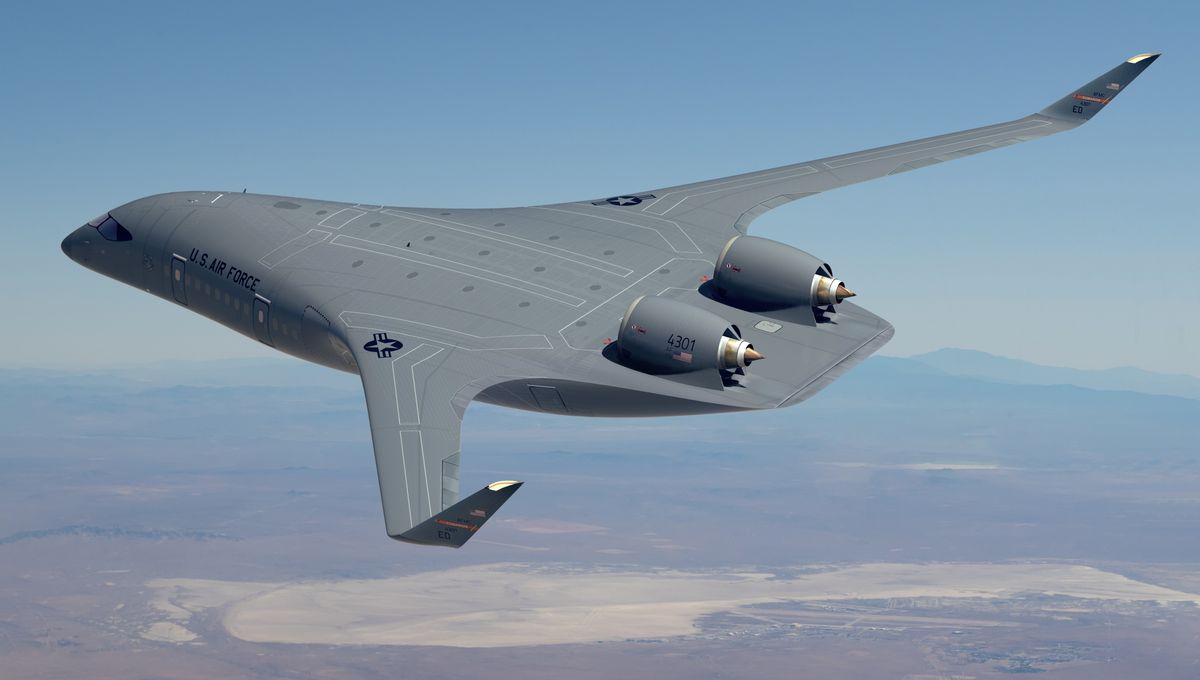Get ready for a seriously futuristic-looking aircraft! But believe it or not, the idea of reimagining airplane design has been around for quite some time. Back in the 1920s, Russian aerodynamicist Nicolas Woyevodsky began researching this concept.
Based on Woyevodsky’s experiments, British manufacturer Westland created an early prototype called the Westland Dreadnought. Unfortunately, its maiden test flight ended in disaster. Other early attempts also faced similar failures, leading to the shelving of the idea. It wasn’t until the 1990s that NASA teamed up with McDonnell Douglas Corporation (now part of Boeing) to conduct flight tests on the X-48 model BWB aircraft, reigniting interest in the concept.
Thanks to advancements in aeronautical engineering, design, and manufacturing, large-scale production of BWB planes is now within reach. The US Air Force is eager to take its development program to the next level and reap the potential benefits of this technology.
“Blended wing body aircraft have the potential to significantly reduce fuel demand and increase global reach,” stated Secretary of the Air Force Frank Kendall. “Moving forces and cargo quickly, efficiently, and over long distances is a critical capability for national security strategy.”
In fact, the Air Force reveals that around 60 percent of its current annual jet fuel consumption is attributed to large-scale transport operations. By blending the body of the aircraft into its high-aspect-ratio wings, BWB designs offer increased range and efficiency. The Air Force estimates that the new design could reduce drag by at least 30 percent compared to existing airplanes.
But that’s not all – these aircraft are also expected to be more environmentally friendly. JetZero recently unveiled concept art for its Z-5 aircraft, which could potentially cut fuel burn and carbon emissions in half compared to conventional aircraft.
The design of the Z-5 bears resemblance to other fixed-wing aircraft currently in use, such as Northrop Grumman’s B-2 Spirit stealth bomber. However, the key difference lies in the fact that the B-2 Spirit is a flying wing aircraft, with no separate fuselage. In contrast, the Z-5 will seamlessly blend its fuselage into its wings.
It’s not just the military that stands to benefit from this technology. The commercial sector could also see gains in the future with the introduction of BWB passenger and freight aircraft, offering increased cabin and cargo space, as well as decreased operational costs.
We may not have to wait too long to witness these futuristic designs taking flight. Initial flight testing of the new JetZero craft is projected to be completed as early as 2027.







